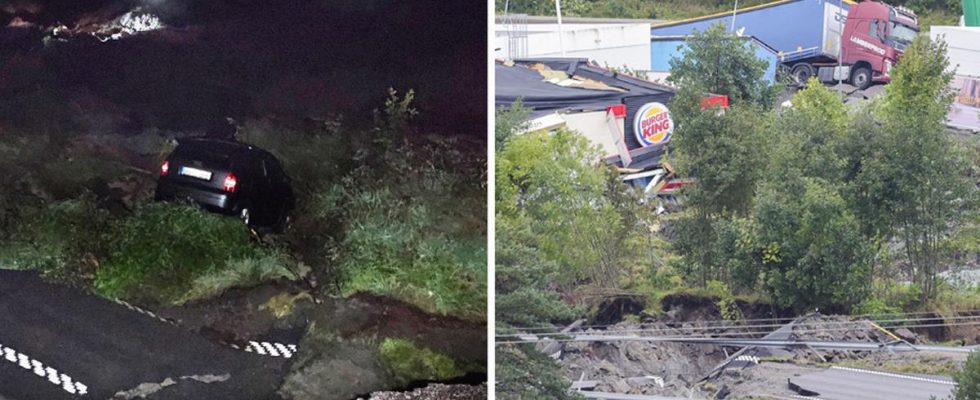Updated 20:01 | Published 19:53
STENUNGSUND. In the middle of the night, the E6 collapsed at Stenungsundsmotet in the massive landslide.
Just minutes before, Bengt Lagergren’s granddaughter drove past on her way home.
– It was pure coincidence that she didn’t go home a little later, he says.
On Saturday morning, Bengt Lagergren turned on the news just as usual at his home in Stenungsund. Then he heard what had happened just a few kilometers away, at the Stenungsund junction along the E6.
A huge landslide had destroyed the roadway in both directions, taking with it a Burger King restaurant, a Västtrafik bus and a gas station, among other things.
– One immediately thinks of the Tjörnbro disaster. And the first thing people wondered was, of course, if there were many injured, says Bengt Lagergren.
However, he was soon reassured. Although three people had to be taken to hospital, no one should have been seriously injured. A contributing factor, Bengt believes, is the driver who, according to the rescue service’s information, should have stood in front of the racial masses and tried to prevent others from driving down.
– He is a hero. There could have been many more who had driven straight into the hole. In the middle of the night, you can’t see very well on the roads, says Bengt.
“Pure coincidence”
In the afternoon, Bengt cycled to the police roadblocks on Ucklumsvägen next to the E6. Even though he received reassuring information about the damage situation, since no one is said to have been seriously injured in connection with the giant slide, he is still worried.
Everything points to the fact that part of the important motorway, which connects Oslo, Gothenburg and Malmö, will remain closed for a long time. Traffic will have to be diverted to other roads.
– It will affect a lot, and there will be problems with the logistics here in Stenungsund. Tjörnbron is already heavily trafficked, and it will get even worse, says Bengt Lagergren.
He also says that a close relative of his could have been hurt.
– My granddaughter drove by just before it happened, it was pure coincidence that she didn’t stay any longer.
The grandson is doing well, says Bengt.
– I spoke to her a while ago, she had just gone home and gone to bed and didn’t know that anything had happened until this morning.
Despite the enormous collapse, Bengt Lagergren is not worried that something similar will happen in the near future. And state geologist Christian Öhrling, who works for SGU, Sweden’s geological survey, says that the authority’s general assessment is that landslides of this dimension occur quite rarely.
– 2006 was probably the last really big one, the Smårödsskredet in northern Bohuslän, I see great similarities with that in this case, he says.
“Really really big landslide”
Christian Öhrling was on site on Saturday to examine the site together with measurement experts from SGI, the Norwegian Geotechnical Institute. Their task is to document what happened, and to help work with security and the investigation of the cause.
He describes it as a “giant area with mud masses that have given way”.
– I haven’t had time to measure it. But this slide is really, really big.
On the other side of the motorway, new industrial areas are being built.
– I won’t say that it is due to that, but there are many indications that something happened in that area, with filling masses that moved. And then the mud gives in, says Christian Öhrling.
Western Sweden has historically been hit by several large landslides. Christian Öhrling mentions the Smårödsskredet in 2006, the Tuveskredet in 1977 and the Surteskredet in 1950.
– Western Sweden has a lot of clays that were previously deposited in seawater, before the country rose. Such clays can develop quick clays, which are very sensitive to load sags and things like that.
A few smaller landslides have also occurred in recent years, including one in Lökeberg between Gothenburg and Stenungsund in 2019.
– But I wasn’t really prepared for a bigger landslide like this right now, says Christian Hörling.
